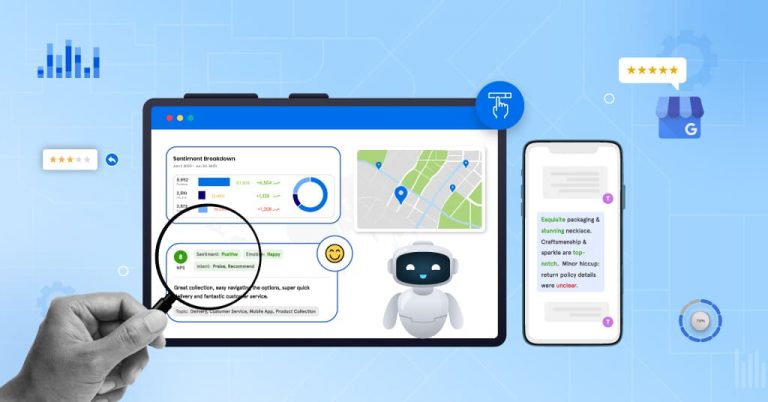For enterprises managing hundreds of outlets, reviews arrive daily across multiple platforms. Restaurant chains, retail networks, auto dealerships, and bank branches all face the same challenge: feedback is abundant but hard to interpret at scale.
Most brands reduce reviews to a number—the average star rating. That figure may look good on a dashboard, but it rarely explains why customers feel the way they do. The written comments, however, hold richer signals: frustrations, requests, comparisons, and hints about future behavior.
The issue is that many organizations treat reviews only as reputation markers. In reality, they are predictive signals of customer intent. With AI-powered review analysis, businesses can uncover these signals at scale and use them to guide decisions across operations, marketing, and engagement.
Manual review analysis quickly breaks down in a multi-location environment.
For enterprises, these gaps translate into missed opportunities and reputational risks. Applying AI to customer feedback analysis ensures every review is processed, patterns are surfaced, and signals are detected early enough to act.
AI brings structure and clarity to the messy world of unstructured review text. It does this in several ways:
Together, these techniques turn reviews from anecdotal commentary into structured intelligence that leaders can trust.

The ultimate value of AI review analysis lies in decision-making. Multi-location enterprises can act on insights in several ways:
Recurring requests like “add delivery” or “accept digital payments” highlight service gaps. These become valuable inputs for product and service roadmaps.
Reviews often expose customer confusion. If people repeatedly ask about policies or appointment processes, businesses can update FAQs, websites, or in-branch materials.
Patterns of “slow service” in certain outlets point to staffing changes or training needs. Frequent cleanliness concerns can prompt revised hygiene protocols.
Positive themes become authentic marketing assets. A bank branch praised for “helpful staff” or a restaurant for “family-friendly atmosphere” can highlight these differentiators in local campaigns.
AI makes it possible to compare performance across outlets. If one dealership is praised for efficiency while another struggles with “slow paperwork,” leaders can replicate best practices.
By integrating AI into customer feedback analysis, organizations elevate reviews from reputation management to a system for operational and strategic improvement.
Star ratings summarize the past. Customer comments, however, point to the future. Hidden within them are signals about loyalty, churn, and unmet needs if businesses know how to interpret them.
With AI review analysis, enterprises can surface these signals at scale. By applying AI to sentiment, spotting recurring themes, and linking feedback to behaviors, brands can act earlier and smarter across hundreds of locations.
At SingleInterface, we help multi-location enterprises make reviews actionable, turning unstructured feedback into structured insights that guide local decisions and enterprise strategy.
Learn more about how you can bring intent-driven insights into your engagement strategy by visiting our website.